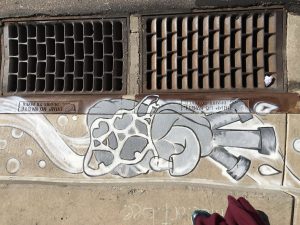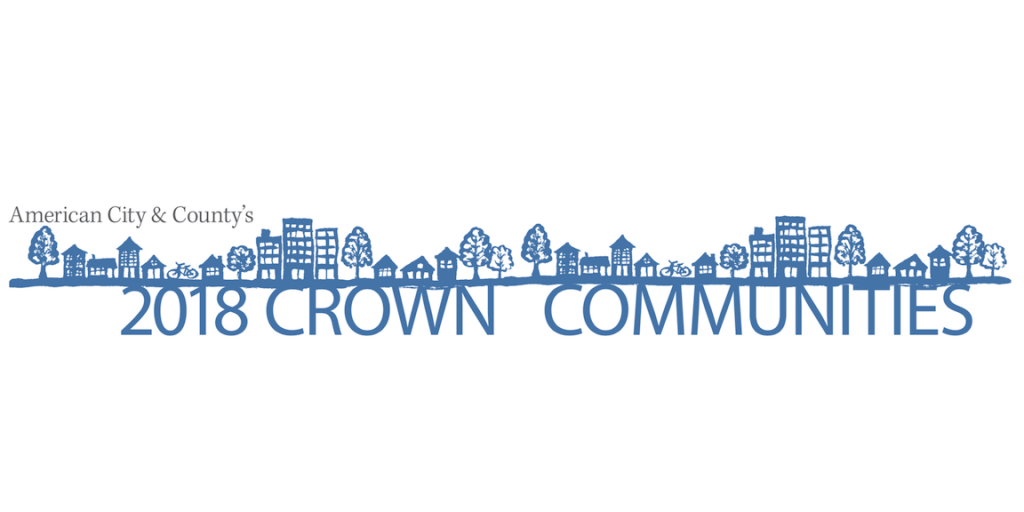The 2018 Crown Communities awards
What is in this article?
- The 2018 Crown Communities awards
- Baltimore, Md.: Coding-focused after-school and city internship program
- Colorado Springs, Colo.: Storm drain art campaign
- Eastlake, Ohio: Special needs-oriented baseball field and playground
- Forest Hills, Pa.: Net-zero energy municipal complex
- Orange County, Calif.: Adult protective services simulation training
- Roanoke, Texas: New city hall and infrastructure as anchor for redeveloped downtown
Colorado Springs, Colo.: Storm drain art campaign
 Colorado Springs, Colo.’s storm drain art project, completed in September 2018, seeks to get people thinking more about the importance of often-overlooked storm drains by combining public education, local art, public works and community involvement.
Colorado Springs, Colo.’s storm drain art project, completed in September 2018, seeks to get people thinking more about the importance of often-overlooked storm drains by combining public education, local art, public works and community involvement.
The seven storm drain art installations feature black and white art painted by local artists. The artists entered designs that reflected on the themes “Keep It Clean We’re All Downstream” or “Only Rain Down the Drain.”
“This has raised quite a few eyebrows on what’s possible,” says Jerry Cordova, stormwater specialist at the city’s water resources engineering division. “Colorado Springs as a whole and El Paso County are pretty conservative in nature. This certainly took us outside our normal box, if you will,” Cordova says.
Altogether, it cost the city $6,000.
The small cost was attained in a few ways. The city pursued $500 sponsorships for the storm drain art pieces. Artists were given $300, while the other $200 were set aside for maintenance. Colorado Springs minimized installation costs by having all public art pieces painted on a single day that occurred during a community art event called the “What If” festival.
Partnerships with public and private organizations were key to the success of this project. They allowed for greater distribution of news about the call for artists and the art installation event, Cordova says.
Partnering with the nonprofit Downtown Partnership, which holds various programs and activities throughout the city, gave the project immense public engagement and messaging capabilities through those activities. The Council of Neighbors and Organizations helped introduce the city to neighborhood associations. The Cultural Office of the Pikes Peak Region gave the city marketing distribution and access to a larger audience.
“By bringing in each of these stakeholders, they could take ownership in this project as well and show that we were all in this together and that together we would create an environmental and public art project… it’s a shared story, it’s a shared success,” Cordova says.
While raising eyebrows, beautifying patches of the city and directing people’s attention to important yet overlooked parts of infrastructure, the art did something else: it opened the door to new possibilities for public works-related art.
“If we can do this on our storm drains… what else in our community, what else in our neighborhoods could we do that is similar to this project?” Cordova reflects.
















